South Sudan: Endless War
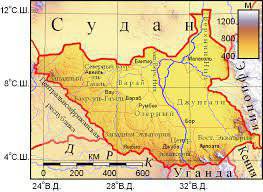 In principle, North and South Sudan are so different regions that the existence of serious tensions between them has historically been conditioned without Western influence. In many ways, the united Sudan, before the independence of South Sudan, proclaimed Nigeria - the same problems: the Muslim North and the Christian-animistic South, plus its nuances in the western regions (Darfur and Kordofan). However, in the Sudan confessional differences were aggravated by racial and cultural differences. The north of united Sudan was inhabited by Arabs and Arabized peoples belonging to the Caucasoid or Ethiopian minority race. But South Sudan - these are Negroids, mostly - Nilots, professing traditional cults or Christianity (in its local sense).
In principle, North and South Sudan are so different regions that the existence of serious tensions between them has historically been conditioned without Western influence. In many ways, the united Sudan, before the independence of South Sudan, proclaimed Nigeria - the same problems: the Muslim North and the Christian-animistic South, plus its nuances in the western regions (Darfur and Kordofan). However, in the Sudan confessional differences were aggravated by racial and cultural differences. The north of united Sudan was inhabited by Arabs and Arabized peoples belonging to the Caucasoid or Ethiopian minority race. But South Sudan - these are Negroids, mostly - Nilots, professing traditional cults or Christianity (in its local sense). “Black Country”
As early as the 19th century, South Sudan did not know statehood, at least in the sense that modern man puts into this concept. It was a territory inhabited by numerous Nilotic tribes, the most famous of which are Dinka, Nuer, Shilluk. The dominant role in a number of regions of Southern Sudan was played by the Azande tribes, who spoke the languages of the Ubangi branch of the Adamav-Ubangi subfamily of the Gur-Ubangi family of the Niger-Kordofan macro-family of languages. From the north, detachments of Arab slave traders periodically invaded the South Sudanese lands, capturing the “living commodity”, which was in great demand in the slave markets of both Sudan and Egypt, Asia Minor, and the Arabian Peninsula. However, the raids of slave-traders did not change the thousand-year archaic way of life of the Nilot tribes, since they did not entail political and economic changes in the southern Sudanese lands. The situation changed when the Egyptian ruler Mohammed Ali in 1820-1821, interested in the natural wealth of the southern Sudanese lands, decided to move to a colonization policy. However, the Egyptians failed to fully master this region and integrate it into Egypt.
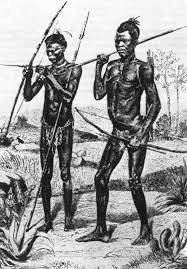 The re-colonization of South Sudan began in the 1870s, but it was not successful either. Egyptian troops managed to conquer only the Darfur region - in 1874, after which they were forced to stop, as there were further tropical swamps that significantly impeded their movement. Thus, South Sudan itself remained virtually uncontrollable. The final development of this vast region came only during the period of Anglo-Egyptian dominion over Sudan in the 1898-1955, however, even during this period it had its own nuances. Thus, the British, together with the Egyptians, who ruled over Sudan, sought to prevent the Arabization and Islamization of the southern Sudanese provinces inhabited by negroid populations. The Arab-Muslim influence in the region was in every way reduced to a minimum, as a result of which the peoples of South Sudan either managed to preserve their ancestral beliefs and culture, or they were Christianized by European preachers. Among a certain part of the Negroid population of South Sudan, English was distributed, but the majority of the population spoke Nilotic and Adamawa-Ubangian languages, practically not fluent in Arabic, which had an actual monopoly in northern Sudan.
The re-colonization of South Sudan began in the 1870s, but it was not successful either. Egyptian troops managed to conquer only the Darfur region - in 1874, after which they were forced to stop, as there were further tropical swamps that significantly impeded their movement. Thus, South Sudan itself remained virtually uncontrollable. The final development of this vast region came only during the period of Anglo-Egyptian dominion over Sudan in the 1898-1955, however, even during this period it had its own nuances. Thus, the British, together with the Egyptians, who ruled over Sudan, sought to prevent the Arabization and Islamization of the southern Sudanese provinces inhabited by negroid populations. The Arab-Muslim influence in the region was in every way reduced to a minimum, as a result of which the peoples of South Sudan either managed to preserve their ancestral beliefs and culture, or they were Christianized by European preachers. Among a certain part of the Negroid population of South Sudan, English was distributed, but the majority of the population spoke Nilotic and Adamawa-Ubangian languages, practically not fluent in Arabic, which had an actual monopoly in northern Sudan. In February, 1953, Egypt and the United Kingdom, in the context of the decolonization processes gaining momentum in the world, agreed on a gradual transition of Sudan to self-government, and then to the proclamation of political sovereignty. In 1954, the Sudanese parliament was created, and 1 in January, 1956, Sudan gained political independence. The British planned that Sudan would become a federal state, in which the rights of the Arab population of the northern provinces and the negroid population of Southern Sudan would be equally respected. However, in the Sudanese independence movement a key role was played by Sudanese Arabs, who promised the British to implement a federal model, but in reality they did not plan to provide real political equality to the North and the South. As soon as Sudan gained political independence, the Khartoum government abandoned plans to create a federal state, which caused a sharp increase in separatist sentiment in its southern provinces. The negro population of the south did not intend to put up with the position of "second-rate people" in the newly proclaimed Arab Sudan, especially because of the violent Islamization and arabization carried out by supporters of the Khartoum government.
"The sting of a snake" and the first civil war
The formal reason for the beginning of the armed uprising of the peoples of Southern Sudan was the massive dismissal of officials and officers who originated from the Christianized nillots of the South. 18 August 1955, a civil war broke out in the South of Sudan. Initially, the Southerners, despite their willingness to stand up to the last, did not pose a serious danger to the Sudanese government forces, since only less than a third of the rebels had firearms. weapon. The rest, like thousands of years ago, fought with bows with arrows and spears. The situation began to change by the beginning of 1960's, when a centralized organization of southern Sudanese resistance was formed, known as “Anya Nya” (“Serpent’s sting”). This organization has gained the support of Israel. Tel Aviv was interested in weakening a large Arab-Muslim state, which was a unified Sudan, and therefore began to help arming South Sudanese separatists. On the other hand, the southern neighbors of Sudan were interested in supporting Anya Nya - African states that had certain territorial claims or political scores for Khartoum. As a result, training camps of South Sudanese rebels appeared in Uganda and Ethiopia.
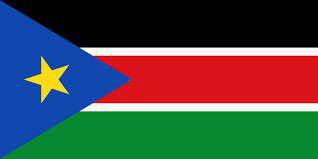 South Sudan’s first civil war against the Khartoum government lasted from 1955 to 1970. and led to the death of at least 500 thousands of civilians. Hundreds of thousands of people became refugees in neighboring states. The Khartoum government increased its military presence in the south of the country, sending a contingent of troops totaling 12 thousand troops. Arms Khartoum was supplied by the Soviet Union. However, the South Sudanese rebels managed to keep under control many areas of the countryside in the provinces of South Sudan.
South Sudan’s first civil war against the Khartoum government lasted from 1955 to 1970. and led to the death of at least 500 thousands of civilians. Hundreds of thousands of people became refugees in neighboring states. The Khartoum government increased its military presence in the south of the country, sending a contingent of troops totaling 12 thousand troops. Arms Khartoum was supplied by the Soviet Union. However, the South Sudanese rebels managed to keep under control many areas of the countryside in the provinces of South Sudan. Considering that the armed forces did not succeed in overcoming the resistance of the rebels, Khartoum entered into negotiations with the rebel leader Joseph Laga, who in 1971 formed the Liberation Movement of South Sudan. Laga insisted on the creation of a federal state in which each part would have its own government and armed forces. Naturally, the Arab elite of Northern Sudan did not intend to agree with these demands, but ultimately the peacemaking efforts of the emperor of Ethiopia Haile Selassie, who acted as an intermediary in the negotiation process, led to the Addis Ababa agreement. In accordance with the agreement, the three southern provinces received an autonomous status and, moreover, created the 12-thousand army with a mixed officer corps of northerners and southerners. English language received regional status in the southern provinces. 27 March The 1972 Armistice Agreement was signed. The Khartoum government pardoned the rebels and set up a commission to monitor the return of refugees to the country.
Islamization and the beginning of the second civil war
However, relative peace in South Sudan did not last as long after the Addis Ababa Agreement was concluded. There were several reasons for the aggravation of the situation. First, significant oil fields were discovered in South Sudan. Naturally, the Khartoum government could not miss the chance to get South Sudanese oil, but control over the oil fields required strengthening the position of the central government in the South. The central government also could not ignore the oil fields of South Sudan, as it had a serious need to replenish its financial resources. The second point was to strengthen the political influence of Islamic fundamentalists on the Khartoum leadership. Islamic organizations had close ties with the traditional monarchies of the Arab East, and also enjoyed a strong influence on the Arab population of the country. The existence of a Christian and, moreover, a "pagan" enclave on the territory of South Sudan was an extremely annoying factor for Islamic radicals. Moreover, they already pushed through the idea of creating an Islamic state in Sudan, living according to Sharia law.
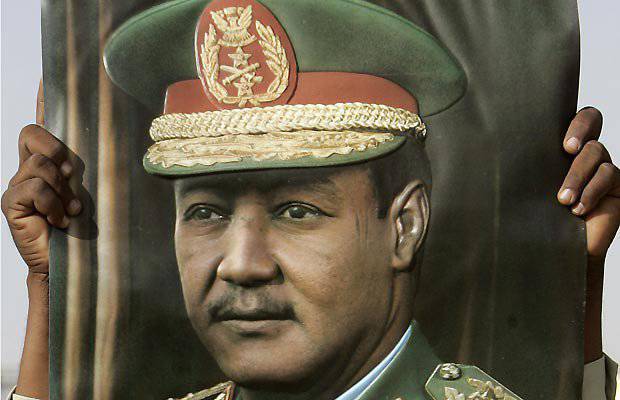
During the described events, Sudan was headed by President Jafar Mohammed Nimeiri (1930-2009). A professional military man, 39-year-old Nimeiri, in 1969 year, overthrew the then Sudanese government of Ismail al-Azhari and declared himself chairman of the Revolutionary Council. Initially, he focused on the Soviet Union and relied on the support of Sudanese communists. By the way, the Sudanese Communist Party was one of the most powerful on the African continent, its representatives Nimeiri introduced into the Khartoum government, declaring a course for the socialist path of development and anti-imperialist resistance. Thanks to cooperation with the Communists, Nimeiri could count on military assistance from the Soviet Union, which he successfully used, including in the conflict with South Sudan.
However, by the end of 1970, the influence of Islamist forces that had increased in Sudanese society forced Nimei to radically change political priorities. In 1983, he proclaimed Sudan a Shariah state. The government included representatives of the Muslim Brotherhood organization, and the construction of mosques began. Sharia laws were introduced throughout the country, including in the South, where the Muslim population was in an absolute minority. In response to the Islamicization of Sudan, local separatists began to become more active in the southern provinces. They accused the Nimeiri government in Khartoum of violating the Addis Ababa agreement. In 1983, the creation of the Sudanese People’s Liberation Army (SPLA) was announced. It is indicative that the SPLA advocated the unity of the Sudanese state and accused the Nimeiri government of actions capable of leading to the disintegration of the country along national and religious lines.
Rebel John Garang
The Sudanese People’s Liberation Army was led by Colonel of the Sudanese Army John Garang de Mabior (1945-2005). Coming from the Nilot Dinka, he has been involved in the partisan movement in South Sudan since 17 years. As one of the most capable young men, he was sent to study in Tanzania, and then in the USA.
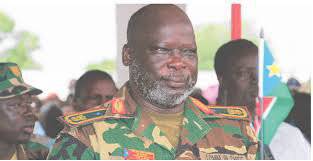 After receiving a bachelor's degree in economics in the United States and completing his studies in agricultural economics in Tanzania, Garang returned to his homeland and rejoined the partisan resistance. The conclusion of the Addis Ababa Agreement prompted him, like many other partisans, to serve in the Sudanese armed forces, where, in accordance with the agreement, the insurgent detachments of southern Sudanese peoples were integrated. As an educated and active man, Garang received captain's shoulder straps and continued to serve in the Sudanese armed forces, where in 11 he rose to the rank of colonel. The last time he served in the headquarters of the ground forces, from where he was sent to the South of Sudan. There he was caught by the news of the introduction of Sharia legislation in Sudan. Then Garang led a whole battalion of Sudanese armed forces, manned by Southerners, to the territory of neighboring Ethiopia, where other Southerners soon arrived, who had deserted from the Sudanese army.
After receiving a bachelor's degree in economics in the United States and completing his studies in agricultural economics in Tanzania, Garang returned to his homeland and rejoined the partisan resistance. The conclusion of the Addis Ababa Agreement prompted him, like many other partisans, to serve in the Sudanese armed forces, where, in accordance with the agreement, the insurgent detachments of southern Sudanese peoples were integrated. As an educated and active man, Garang received captain's shoulder straps and continued to serve in the Sudanese armed forces, where in 11 he rose to the rank of colonel. The last time he served in the headquarters of the ground forces, from where he was sent to the South of Sudan. There he was caught by the news of the introduction of Sharia legislation in Sudan. Then Garang led a whole battalion of Sudanese armed forces, manned by Southerners, to the territory of neighboring Ethiopia, where other Southerners soon arrived, who had deserted from the Sudanese army. The units that were under the command of John Garang operated from the territory of Ethiopia, but they soon managed to bring under their control large parts of the provinces of South Sudan. This time, the resistance to the Khartoum government was more successful, since there were many professional soldiers in the ranks of the insurgents who had received military education and experience in command of army units over the years.
Meanwhile, in 1985, another military coup took place in Sudan itself. While President Nimeiri was visiting the United States of America, Colonel General Abdel Rahman Svar al-Dagab (born 1934), who served as chief of the general staff of the armed forces, carried out a military coup and seized power in the country. This happened 6 April 1985. The overriding decision of the rebels was the abolition of the 1983 constitution of the year, which established sharia law. The ruling party, the Sudanese Socialist Union, was dissolved, the former president Nimeiri found himself in exile, and General Swar al-Dagab handed over power to the government of Sadiq al-Mahdi in 1986. The latter began negotiations with the South Sudanese rebels, seeking to conclude a peace agreement and prevent further bloodshed. In 1988, the South Sudanese rebels agreed with the Khartoum government on a draft peaceful settlement of the situation in the country, including the abolition of the state of emergency and Sharia law. However, in November 1988, Prime Minister al-Mahdi refused to sign this plan, which led to the strengthening of the position of Islamic fundamentalists in the Khartoum government. However, in February 1989, the Prime Minister, who was under pressure from military circles, adopted a peace plan. It seemed that nothing further stops the Khartoum government from fulfilling the agreements and peace in the South of Sudan can be restored.
However, instead of appeasing the southern provinces, a sharp aggravation of the situation followed. It was caused by a new military coup that occurred in Sudan. 30 June 1989, Brigadier General Omar al-Bashir - a professional military paratrooper who commanded a paratroop brigade in Khartoum before - seized power in the country, dissolved the government and banned political parties. Omar al-Bashir was in a conservative position and sympathized with Islamic fundamentalists. In many ways, it was he who stood at the origins of a further escalation of the conflict in the South of Sudan, which led to the collapse of a single Sudanese state.
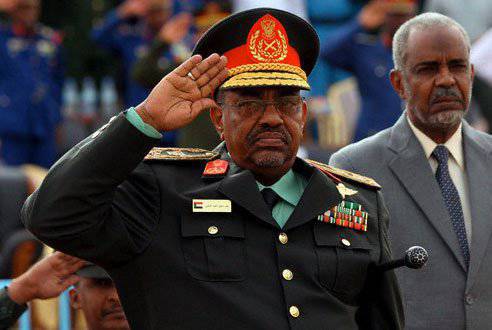 The outcome of al-Bashir’s activities was the establishment of a dictatorial regime in the country, the prohibition of political parties and trade union organizations, a return to Sharia law. In March, 1991 updated the country's criminal code, which included medieval penalties, such as violent amputations of hands for certain types of crime, stoning and crucifixion. Following the introduction of the new criminal code, Omar al-Bashir began to renew the judicial corps in the South of Sudan, replacing there judges - Christians with judges - Muslims. In fact, this meant that Sharia law would be applied against the non-Muslim population of the southern provinces. In the northern provinces of the country, the Sharia police have launched reprisals against immigrants from the South who did not comply with the norms of Sharia law.
The outcome of al-Bashir’s activities was the establishment of a dictatorial regime in the country, the prohibition of political parties and trade union organizations, a return to Sharia law. In March, 1991 updated the country's criminal code, which included medieval penalties, such as violent amputations of hands for certain types of crime, stoning and crucifixion. Following the introduction of the new criminal code, Omar al-Bashir began to renew the judicial corps in the South of Sudan, replacing there judges - Christians with judges - Muslims. In fact, this meant that Sharia law would be applied against the non-Muslim population of the southern provinces. In the northern provinces of the country, the Sharia police have launched reprisals against immigrants from the South who did not comply with the norms of Sharia law.In the southern provinces of Sudan, the active phase of hostilities resumed. The rebels of the Sudanese People’s Liberation Army took control of part of the provinces of Bahr al-Ghazal, Upper Nile, Blue Nile, Darfur and Kordofan. However, in July 1992, Khartoum troops, better armed and trained, managed to take control of the headquarters of the southern Sudanese rebels in Torit as a result of the swift attack. Against the civilian population of the southern provinces, repressions began, including the stealing of tens of thousands of women and children into slavery in the north of the country. According to international organizations, up to 200 thousands of people were captured and enslaved by North Sudanese troops and non-governmental Arab forces. Thus, at the end of the twentieth century, everything returned to the situation a century ago - the raids of Arab slave traders on the Negro villages.
At the same time, the Khartoum government began to disorganize the South Sudanese resistance by sowing internal hostility based on intertribal contradictions. As is well known, John Garang, who led the people's liberation army, came from the Dink people, one of the largest Nilot peoples of South Sudan. Sudanese special services began to sow national discord among the rebels, convincing representatives of other nationalities that if they won, Garang would establish a Dinka dictatorship that would carry out genocide against other ethnic groups in the region.
As a result, an attempt was made to overthrow Garang, which ended with the separation in September 1992 of the group led by William Bani, and in February 1993 of the year - group led by Cherubino Boli. It seemed that the Khartoum government was about to succeed in cracking down on the rebel movement in the south of the country, sowing discord among rebel groups and, at the same time, intensifying repression against the non-Muslim population of the southern provinces. However, the excessive foreign policy independence of the Khartoum government spoiled everything.
Omar al-Bashir, sympathizing with the Islamists, supported Saddam Hussein during Operation Storm in the Desert, which resulted in the final deterioration of relations between Sudan and the United States of America. After that, many African countries began to turn away from Sudan as an “outcast country”. Ethiopia, Eritrea, Uganda and Kenya showed their support for the rebels, with the first three countries stepping up their military assistance to rebel groups. In 1995, the opposition political forces of Northern Sudan merged with the rebels of South Sudan. The so-called “National Democratic Alliance” includes the Sudanese People’s Liberation Army, the Sudan Democratic Union and a number of other political organizations.
All this led to the fact that in 1997, the Khartoum government signed an agreement with part of the rebel groups on reconciliation. Omar al-Bashir had no other way and how to recognize the cultural and political autonomy of South Sudan. In 1999, Omar al-Bashir himself made concessions and offered John Garangu cultural autonomy within Sudan, but the rebel leader could not be stopped. Until 2004, active hostilities were fought, although at the same time ceasefire negotiations between opposing factions continued. Finally, on January 9 on 2005, the next peace agreement was signed in the Kenyan capital Nairobi. On behalf of the rebels, it was signed by John Garang, on behalf of the Khartoum government - by the Vice-President of Sudan, Ali Osman Mahammad Taha. In accordance with the terms of this agreement, it was decided: to repeal the sharia law in the south of the country, cease fire on both sides, demobilize a significant part of the armed formations, and establish an even distribution of revenues from the exploitation of oil fields in the southern provinces of the country. South Sudan was granted autonomy for six years, after which the population of the region was given the right to hold a referendum, which would raise the question of the independence of South Sudan as a separate state. The commander of the Sudanese People’s Liberation Army, John Garang, became the vice-president of Sudan.
By the time of the conclusion of peace agreements, according to the data of international organizations, in hostilities, during the repression and ethnic cleansing, up to two million people died. Approximately four million people left South Sudan, becoming internal and external refugees. Naturally, the consequences of the war for the Sudanese economy and the social infrastructure of South Sudan were terrible. However, 30 July 2005, John Garang, returning by helicopter from a meeting with Ugandan President Yoweri Museveni, was killed in a plane crash.
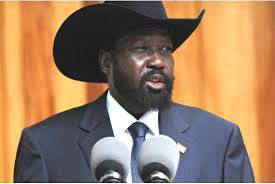 He was replaced by Salva Kiir (born 1951) - Deputy Garang on the leadership of the military wing of the Sudanese People’s Liberation Army, known for more radical positions on the issue of granting political independence to South Sudan. As is known, Garang was also happy with the model of preserving the southern provinces as part of a unified Sudan, in the absence of interference in their affairs by the Islamic Arab elite of Khartoum. However, Salva Kiir was much more determined and insisted on the full political independence of South Sudan. Actually, after the helicopter crash, he had no other obstacles left. Replacing the deceased Garang as vice president of Sudan, Salva Kiir set out to further declare the political independence of South Sudan.
He was replaced by Salva Kiir (born 1951) - Deputy Garang on the leadership of the military wing of the Sudanese People’s Liberation Army, known for more radical positions on the issue of granting political independence to South Sudan. As is known, Garang was also happy with the model of preserving the southern provinces as part of a unified Sudan, in the absence of interference in their affairs by the Islamic Arab elite of Khartoum. However, Salva Kiir was much more determined and insisted on the full political independence of South Sudan. Actually, after the helicopter crash, he had no other obstacles left. Replacing the deceased Garang as vice president of Sudan, Salva Kiir set out to further declare the political independence of South Sudan. Political independence did not bring peace
January 8, 2008, North Sudanese troops were withdrawn from the territory of Southern Sudan, and a referendum was held on January 9, where 15% of citizens participated expressed political independence for South Sudan, which was proclaimed July 2011 of July 98,8. Salva Kiir became the first president of the sovereign Republic of South Sudan.
However, the proclamation of political independence does not mean the final resolution of all conflict situations in this region. First, the extremely tense relations between Northern Sudan and South Sudan remain. They resulted in several armed clashes between the two states. And the first of them began in May 2011 of the year, that is, a month before the official declaration of independence of South Sudan. It was a conflict in Southern Kordofan, a province that is currently part of Sudan (Northern Sudan), but is largely inhabited by representatives of African peoples who are related to the inhabitants of Southern Sudan and who maintained historical and cultural ties with them, including long struggle for the independence of the southern Sudanese state.
The most serious contradictions with the Khartoum government were the inhabitants of the Nubian Mountains - the so-called “mountain Nubians”, or nubas. The million people of the Nuba speak the Nubian language, one of the two branches of the Tama-Nubian language family, traditionally included in the East Sudan superfamily of the Nilo-Sahara macro family. In spite of the fact that formally Nuba are Muslims, they retain very strong remnants of traditional beliefs, due to their residence in the mountains and relatively late Islamization. Naturally, on this basis, they have tense relations with Islamic radicals from the Arab environment of Northern Sudan.
6 June Fighting broke out on 2011, formally caused by the conflict around the withdrawal of South Sudanese units from the city of Abyei. The fighting killed at least 704 South Sudanese soldiers, 140 000 civilians became refugees. Many residential buildings, social and economic infrastructure were destroyed. At present, the territory in which the conflict took place remains within Northern Sudan, which does not exclude the possibility of its further repetition.
26 March 2012 broke out another armed conflict between Sudan and South Sudan - because of the border town of Heglig and surrounding areas, many of which are rich in natural resources. The Sudan People’s Liberation Army and Sudan’s armed forces participated in the conflict. 10 April 2012 South Sudan seized the city of Heglig, in response, the Khartoum government announced a general mobilization and 22 on April 2012 achieved the withdrawal of the South Sudan units from Heglig. This conflict helped to officially define South Sudan as an enemy state in Khartoum. At the same time, neighboring Uganda has officially and once again confirmed that it will support South Sudan.
Meanwhile, in the territory of South Sudan itself, all is not calm. Given that this state is inhabited by representatives of a number of ethnic groups that claim to play a primary role in the country, or are offended that other ethnic groups are in power, it is easy to predict that South Sudan almost immediately after independence was declared an arena for the internecine struggle of opposing ethnic armed groups. The most serious confrontation unfolded in 2013-2014. between the Nuer and Dinka ethnic groups - among the most numerous Nilotic ethnic groups. December 16 2013 in the country was prevented by an attempt at a military coup, which, according to President Salva Kiir, was attempted by supporters of former Vice President Rijek Machar. Riek Machar (born 1953) is also a veteran of the partisan movement, fought first in the Sudan People’s Liberation Army, and then concluded separate agreements with the Khartoum government and led the Prohartum South Sudanese Defense Forces, and then the Sudan People’s Defense Forces / Democratic Front. Then Machar again became a supporter of Garang and served as vice president in South Sudan. Machar belongs to the people of the Nuer and is considered by representatives of the latter as a spokesman for their interests, as opposed to Dinka Salva Kiiru.
The attempted coup, undertaken by supporters of Machar, marked the beginning of a new bloody civil war in South Sudan - this time between the Dinka and Nuer peoples. According to international organizations, only in the period from the end of December 2013 to February 2014, 863 thousands of civilians in South Sudan became refugees, at least 3,7 million people are in dire need of food. All the efforts of international mediators to ensure the conduct of the negotiation process between opponents end in failure, because there are always uncontrolled groups that continue to further escalate violence.
Information